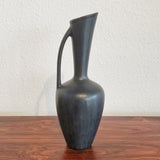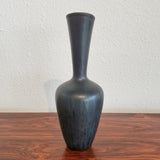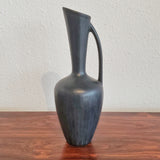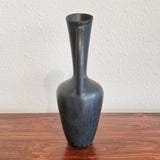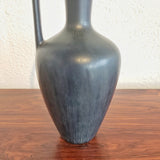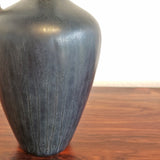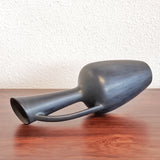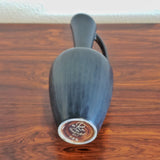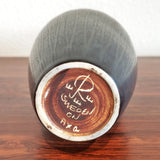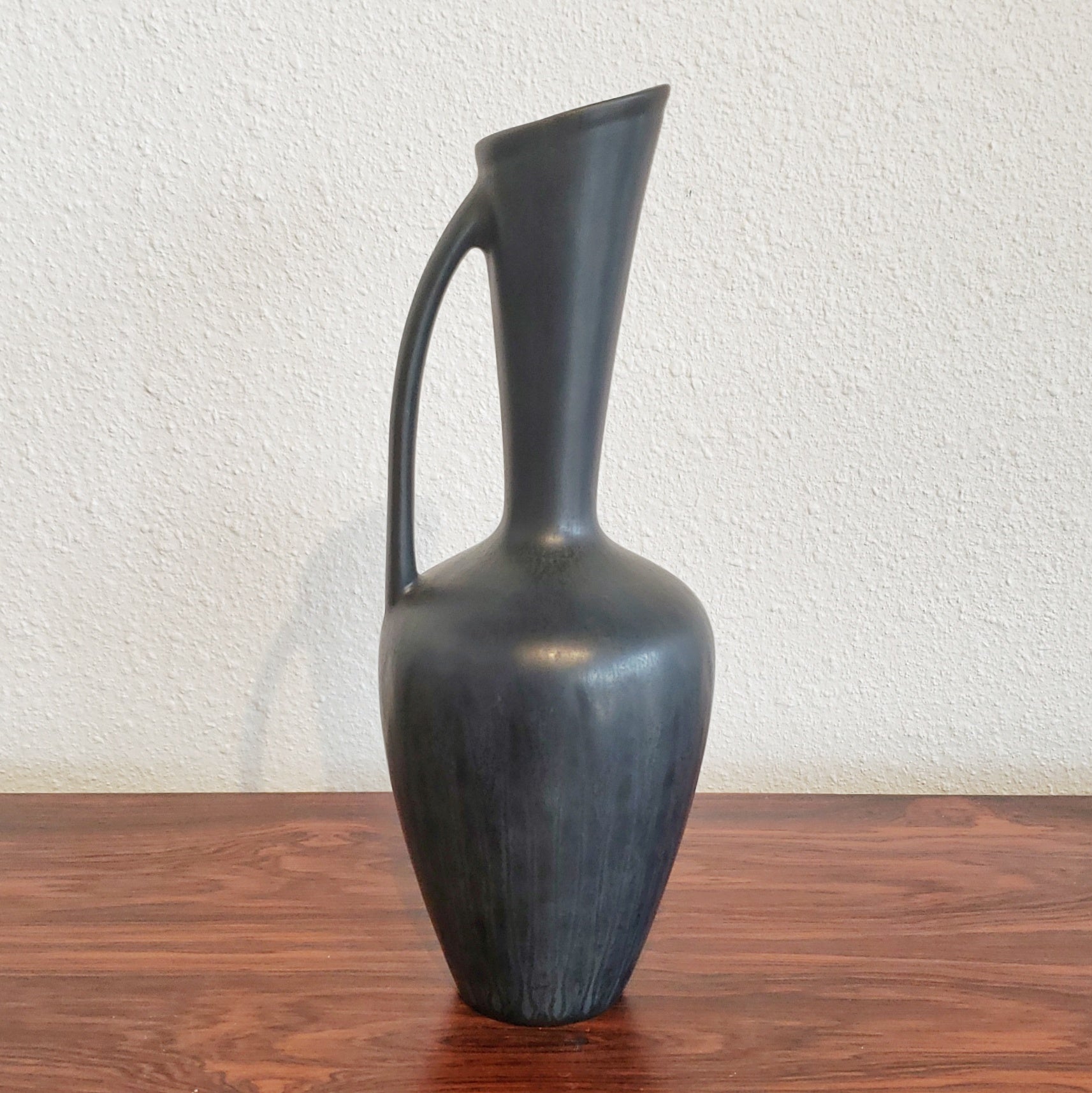
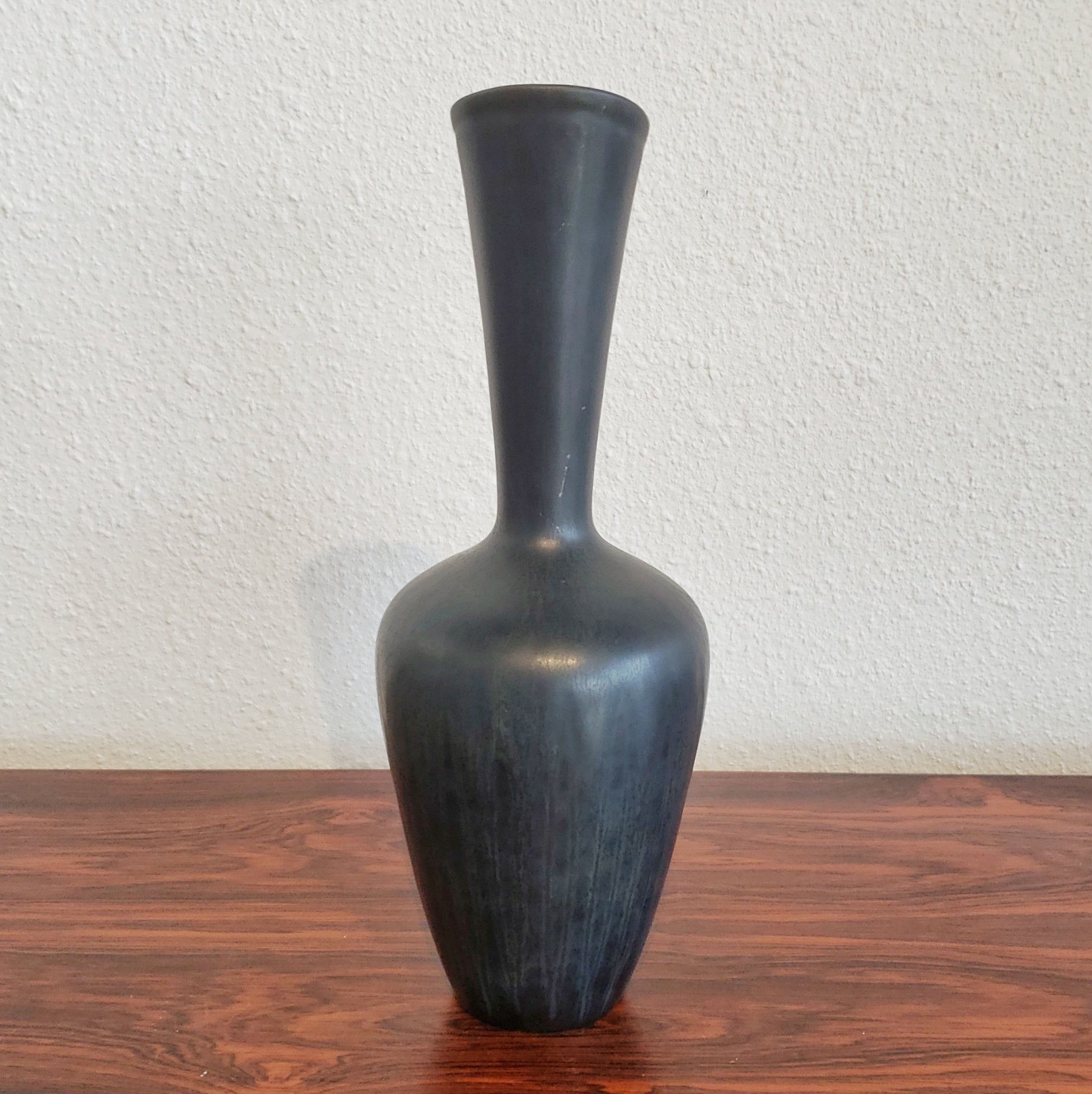
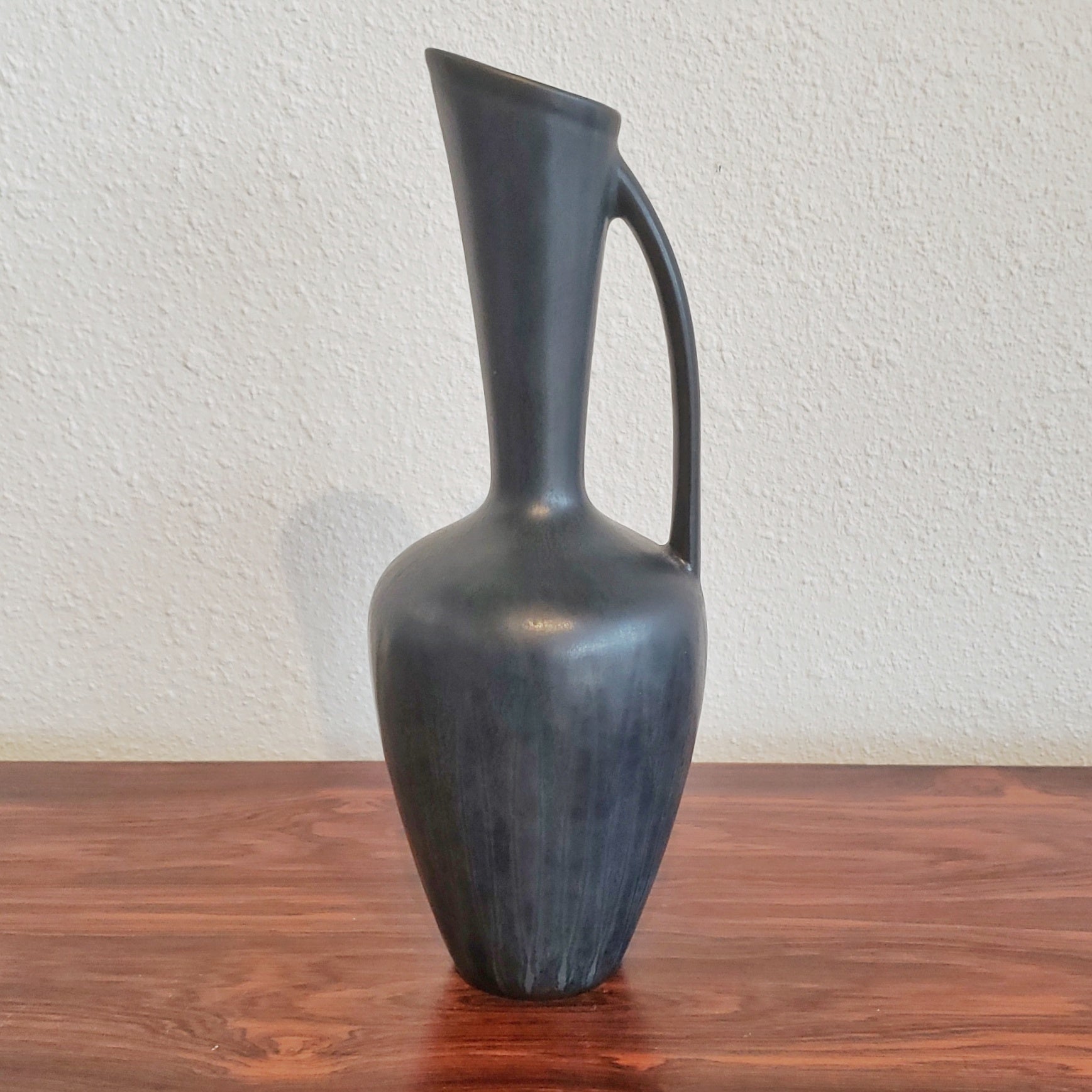
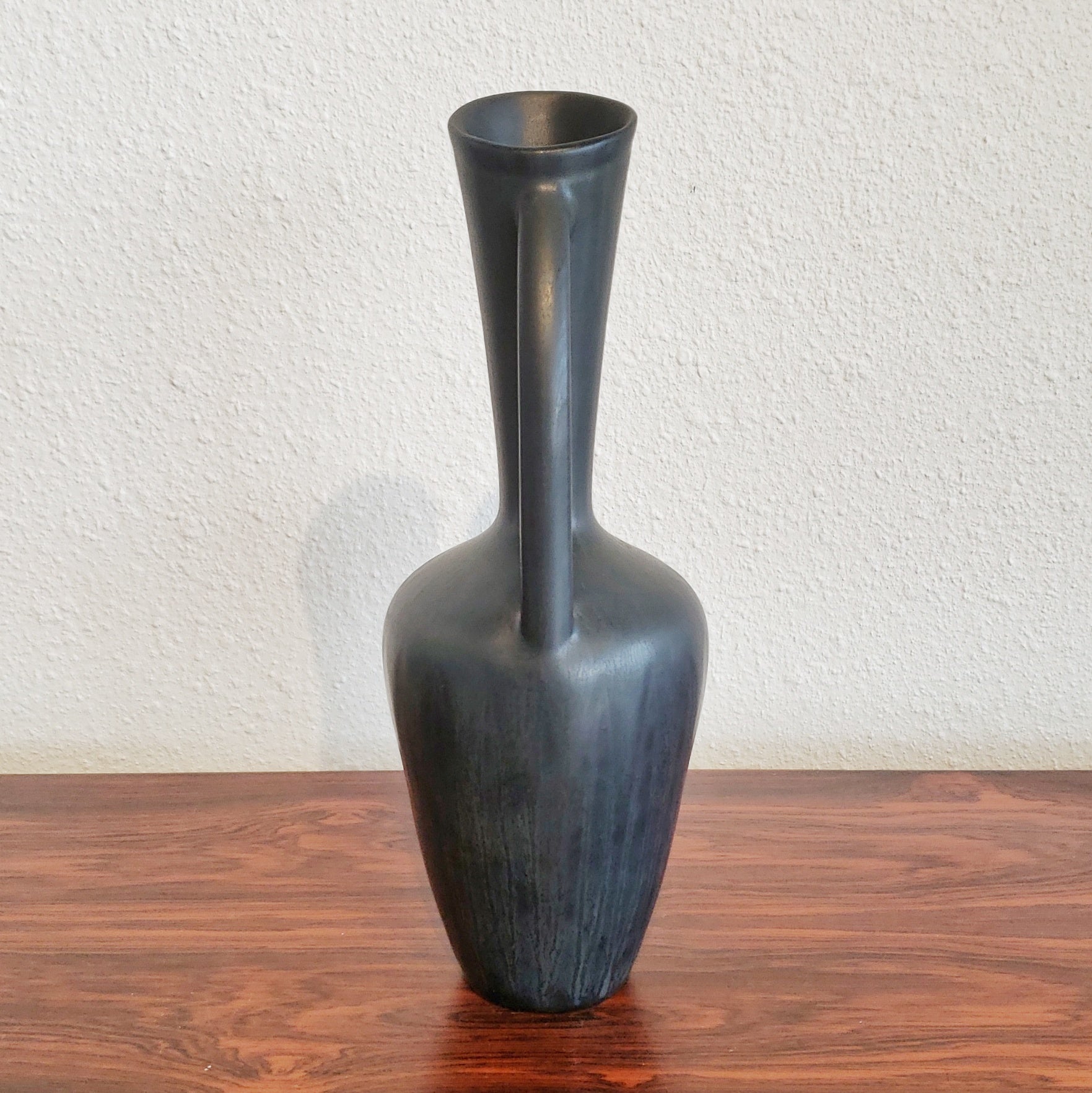
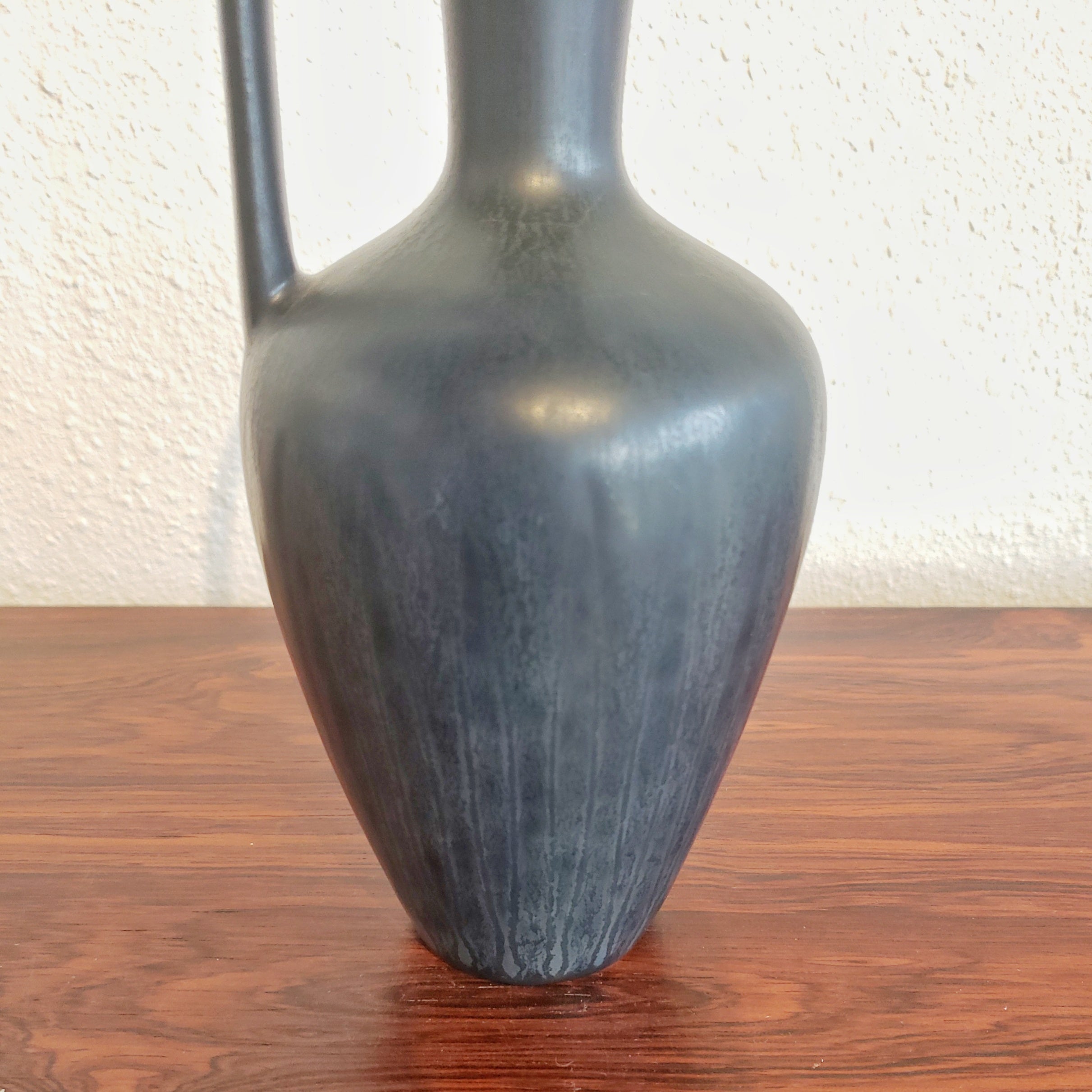
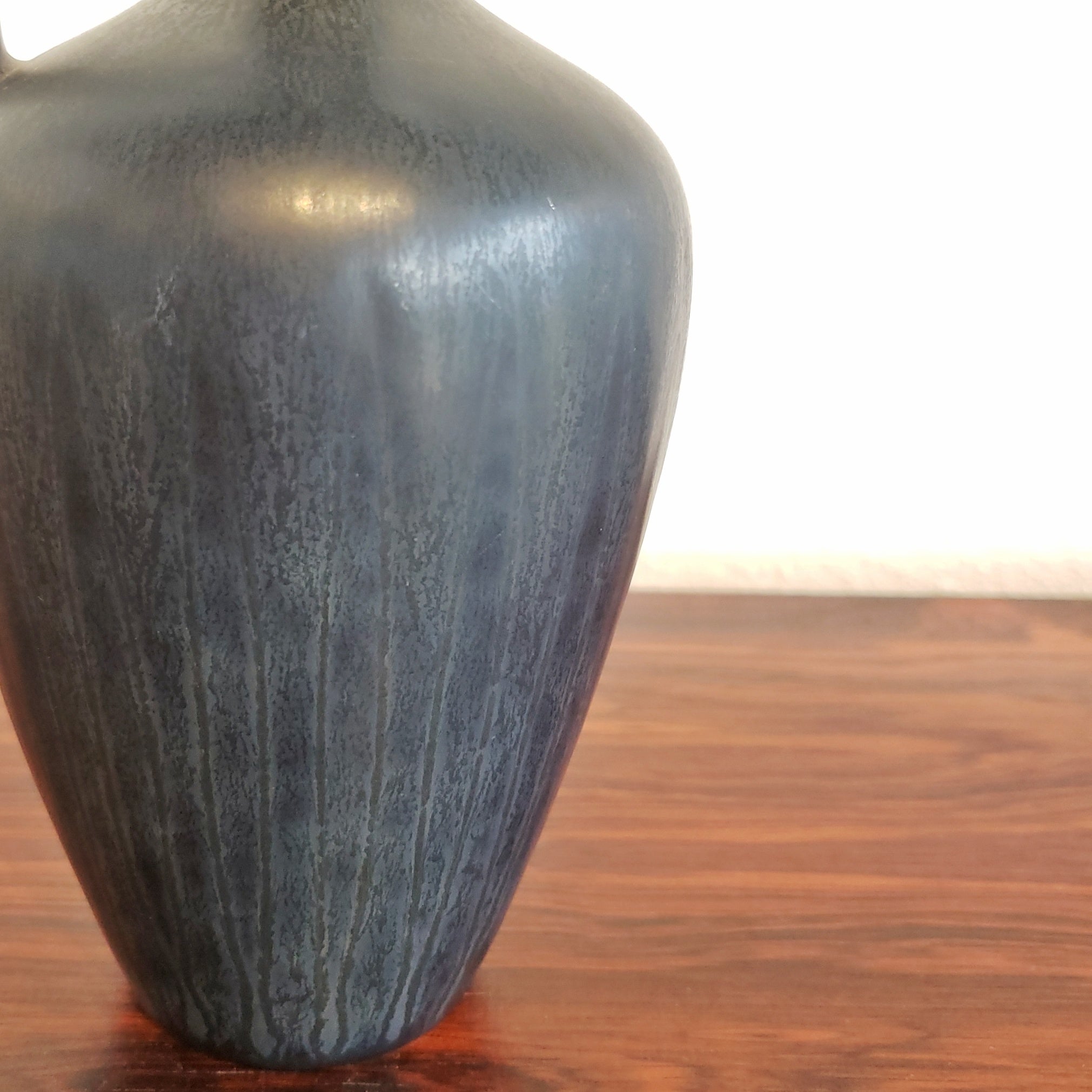
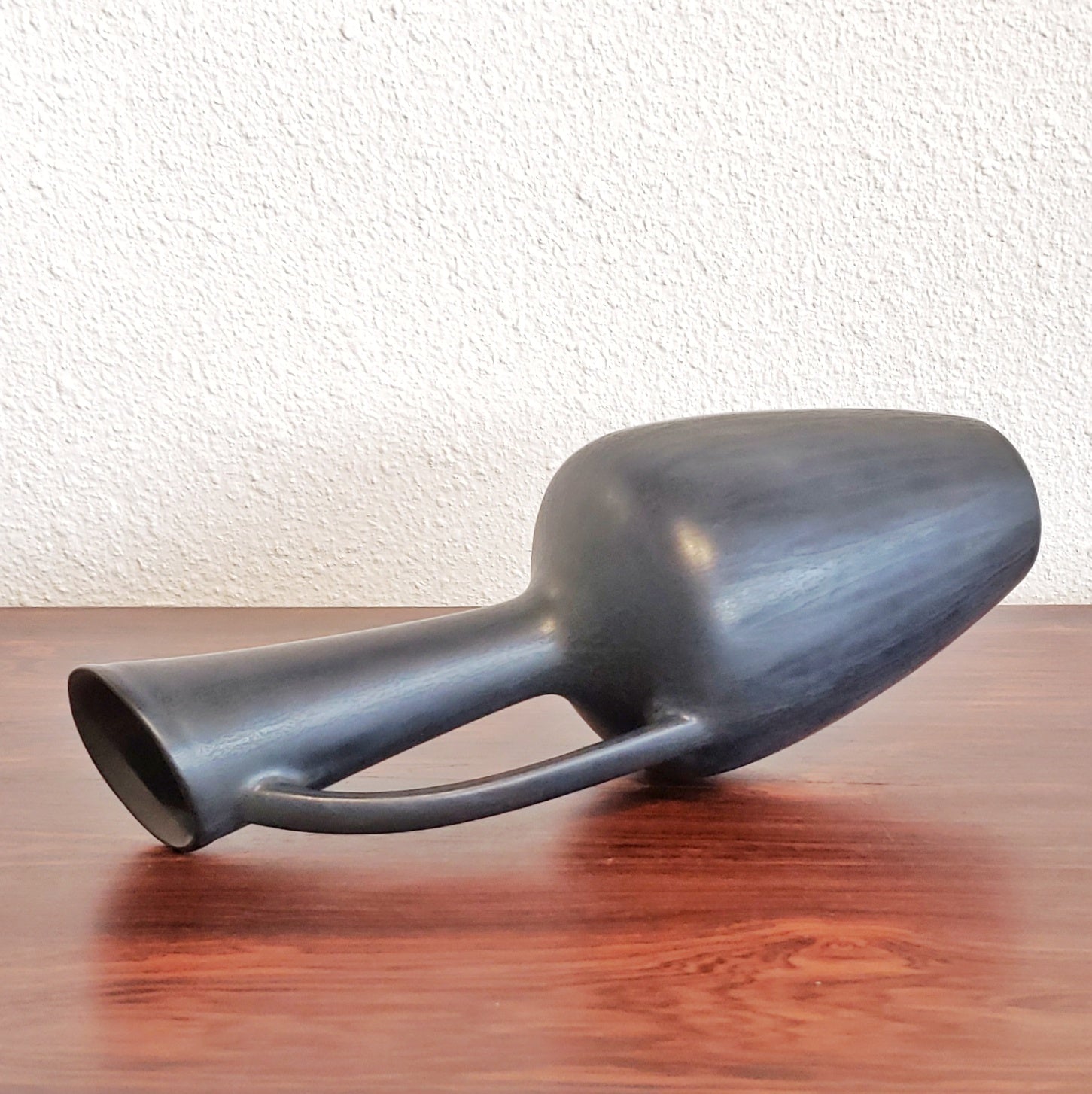

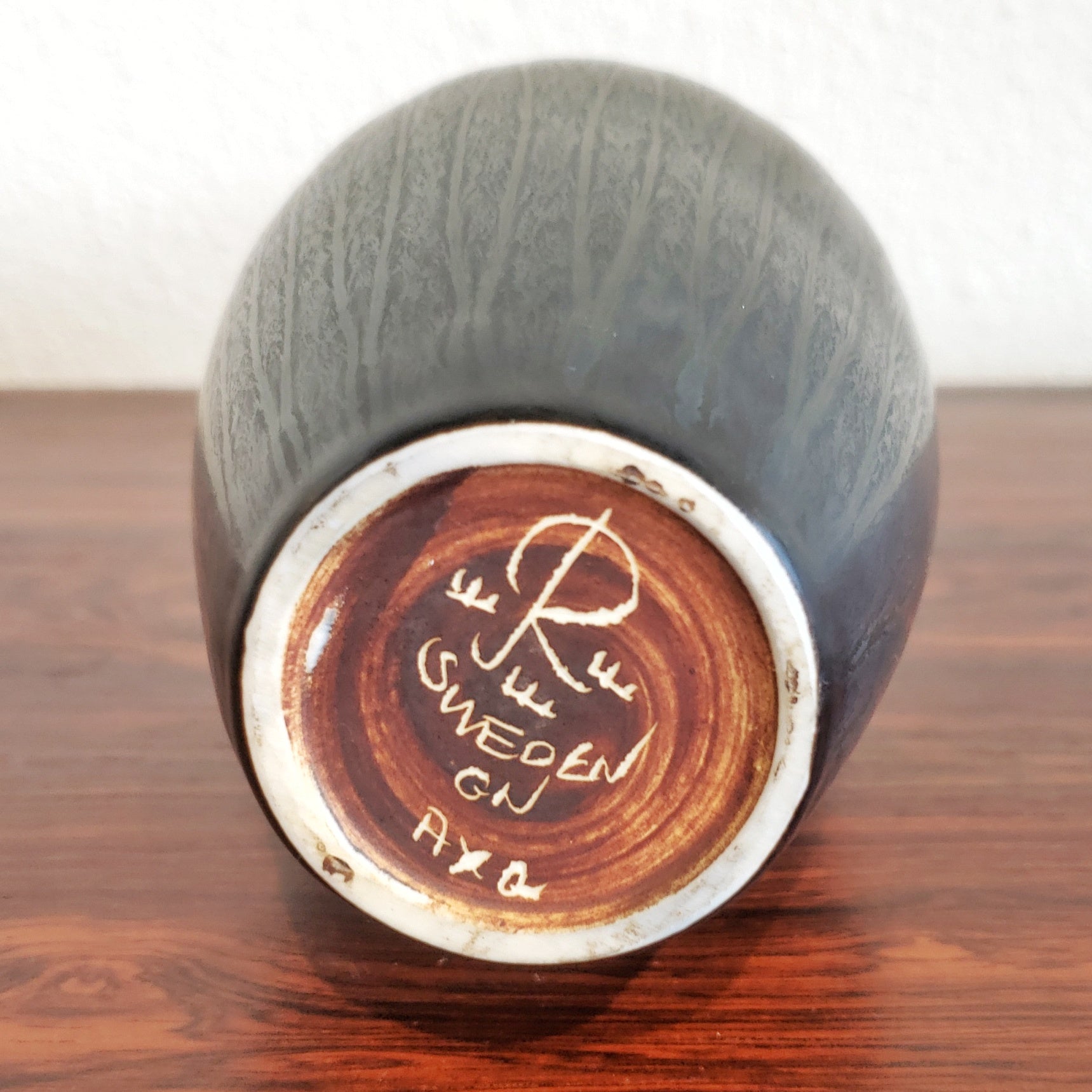
1950s GUNNAR NYLUND VASE MODEL ‘AXQ’ FOR RÖRSTRAND (27.5 cm)
CONTACT US HERE ABOUT THIS ITEM.
A supremely elegant Scandinavian stoneware vase (model AXQ) by Danish-Finnish ceramic artist, designer, and sculptor Gunnar Nylund for RÖRSTRAND. Nylund was one of the most renowned ceramicists of the last century and is best known for his work with the Swedish brand RÖRSTRAND, one of the oldest ceramics manufacturers in Europe. The dark, slate-colored “hare’s-fur” glaze is beautifully striated and very subtle. Made in the 1950s, it is fully marked on the base.
GUNNAR NYLUND (1904–1997) was born in Paris in 1904 to a Danish artist mother and a Finnish-Swedish sculptor father, both of whom were art students there at the time. In 1917, the family moved to Copenhagen, and later to Helsinki, where Nylund attended elementary school. When the Finnish Civil War broke out at the end of 1918, he and his mother moved to Denmark, where he was enrolled in boarding school. Following graduation in 1923, he returned to Helsinki to complete an architecture internship and study ceramics with his father, who encouraged him to explore the physicality of animals. Nylund would craft a wide variety of stylistically lifelike animal figurines and sculptures during his long career, many of which are held in museums.
Nylund eventually returned to Copenhagen to study architecture at the Royal Danish Academy of Fine Arts, but continued to practice ceramics with his father and took on part-time work at the Bing & Gröndahl (B&G) porcelain factory. His contributions to the 1925 Internationale des Arts Décoratifs et Industriels Modernes expo in Paris would lead B&G to offer him permanent employment. Quitting his architectural studies, he worked at B&G under the tutelage of Jean René Gauguin (1881-1961), son of Paul Gauguin. After three years of focusing on stoneware there, he had had enough of the firm’s conservative approach, worrying that his impulses toward modernity were being stifled. Leaving B&G in 1928, Nylund established the Nylund & Krebs studio with glaze chemist Nathalie Krebs (1895-1978), renting out the workshop of renowned Swedish ceramicist Patrick Nordström (1870-1929) in Islev, a suburb of Copenhagen. The following year, they launched SAXBO, a groundbreaking line of Nordic stoneware, mostly produced in undecorated matte glazes in novel colors. The pioneering range soon became an icon of Scandinavian ceramic design. The pair assumed control of the workshop in 1930.
The SAXBO line generated a lot of attention and led to Nylund’s recruitment by Swedish porcelain giant RÖRSTRAND in 1931. He was stationed at their Lidköping factory, where he produced the first Swedish matte-glazed stoneware and sculptures in shimmering, colorful chamotte. (Chamotte refers either to a particular type of inert grog—crushed, unglazed pottery used as an additive in ceramic production—made from high-fired, heat-resistant clay or pottery produced using it.) His pieces proved to be very popular and had a profound impact on modern Swedish ceramics. Much of his stoneware from the period features Song Dynasty-inspired crackelé and oxblood glazes. He was particularly celebrated for his matte, feldspar-glazes with “hare’s-fur” and crystal décors. Sculptures were produced both in series and as one-offs. Nylund was also responsible for numerous tableware patterns. Barring a one-year return stint at B&G, he worked continuously for RÖRSTRAND through the late ’50s, the majority of the time as its artistic director.
Several freelance projects occupied Nylund during the 1940s, including a commission to design fixtures for the Swedish bathroom manufacturer Ifö. He took the position of artistic director for the Strömbergshyttans glassworks in Hovmantorp in 1955 (and would later freelance there). In the early ’60s, he returned to Copenhagen and started producing a more industrial class of stoneware for Nymölle Keramiska Fabrik in Lyngby as a contractor. At this time, he also created Europe’s largest stoneware fountain, the ”Scanisaurus,” featuring twin plesiosaurs, in Bromölla, Sweden.
Beginning in the mid ’40s, Nylund devoted much of his effort to the creation of work for public spaces. Examples include the “The Theater Cavalcade” at the Malmö Stadsteater, “The Jungle Awakens” now found at the entrance of the library of the University of Agriculture in Uppsala, and the “Three Västgöter” relief for the Västgöta student nation in Uppsala; as well as altarpieces for the Lidköping crematorium and the cathedral in Skara. He also created sculptures such as “St. George and the Dragon” for Sweden’s National Institute of Arts and Crafts and the “Mermaid” fountain for the National Museum in Stockholm (since moved to the RÖRSTRAND museum in Lidköping).
Nylund ended his career as a pensioner with his own workshop in the southern Swedish town of Lomma. He left a legacy of unsurpassed ceramic quality, magnificent creative design, and brilliant craftsmanship. He died in 1997.
RÖRSTRAND was Sweden’s most famous and enduring manufacturer of ceramics. It was founded at the site of a 13th-century land grant for the convent of the Poor Clares in Stockholm. Located on the Karlberg Sea inlet, the property was named “Rörstrand” due to the reedy shores of its lake. The area had been returned to the crown in 1527 under Gustav I.
After the signing of an “Associations contract between all concerned in the Swedish Porcelain works, which will be established at great Rörstrand in the Delft manner” in 1726, a factory was built. Although licensed to produce true porcelain, initial production was limited to faience. Not until the 1770s did they finally attempt to reproduce the flintware—the hard, white earthenware created by adding powdered flint to clay—that rival Swedish factories, such as Marieberg, had already mastered.
Developing the new technologies was a struggle, and the weak market and high production costs meant RÖRSTRAND’s efforts lagged, even while competition from imported Chinese porcelain intensified. However, with its acquisition of competitor Marieberg in 1785, RÖRSTRAND gained a local monopoly, and the incentive to innovate was reduced. A focus on new techniques would only re-emerge with the founding of a rival factory in Gustafsberg in 1825, and RÖRSTRAND began the mass production of printed tableware. By the 1860s, it was one of the nation’s largest industries.
As of 1900, RÖRSTRAND employed around 1,100 people and had earned a worldwide reputation. However, as Stockholm expanded, the factory’s land became valuable for new housing. In 1926, the RÖRSTRAND factory was demolished, and production moved, first to Gothenburg and then to Lidköping.
Subsequent decades saw the company pass through a series of owners—Upsala-Ekeby, Finnish Wärtsilä, Japanese Hakusan, and Gustavsberg—until its final acquisition by the Finnish design brand Iittala in 2001. In a move driven by losses, Iittala shifted production out of Sweden, and in 2005, the Lidköping factory closed its doors. Today, the company’s long industrial history is preserved at a museum housed on the grounds of the former factory, where its story of craft and adaptation continues to inspire.
DETAILS
Designer – GUNNAR NYLUND
Design Period/Year – 1950s
Maker – RÖRSTRAND
Production Period/Year – 1950s
Origin – SWEDEN
Styles/Movements – SWEDISH MODERN
Materials – STONEWARE
Colors – SLATE
Condition – Excellent vintage condition. May show minor signs of previous ownership and use.
Dimensions – 4" DIAM. × 10 ¾" H

